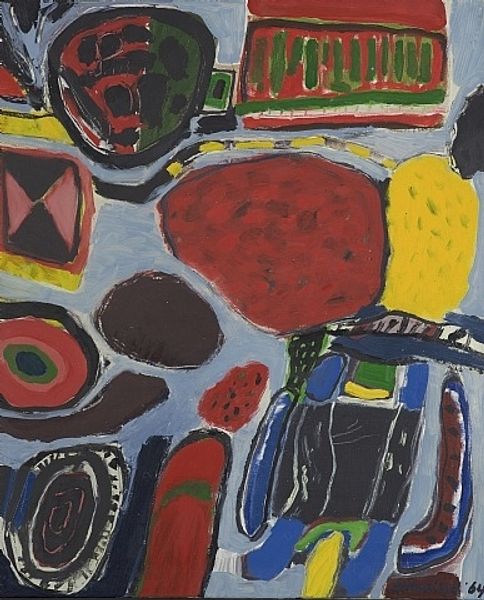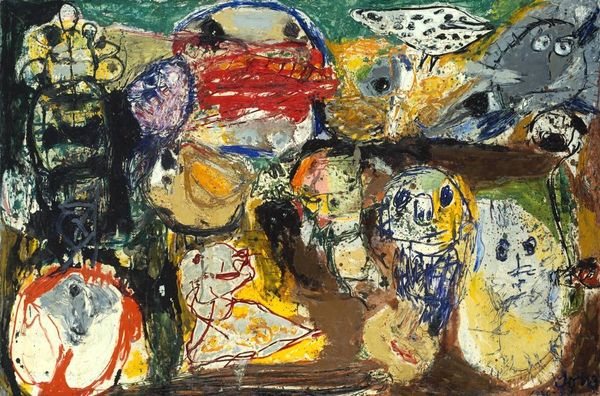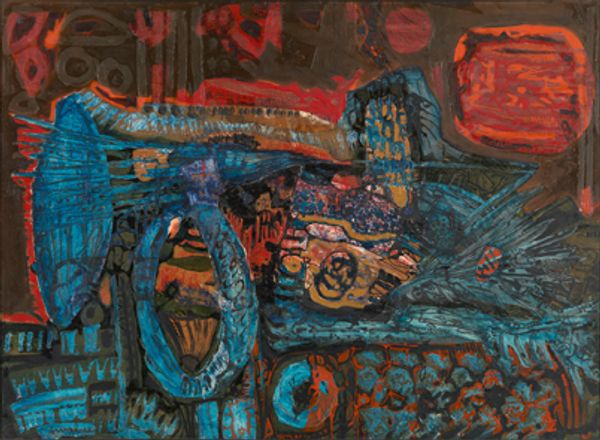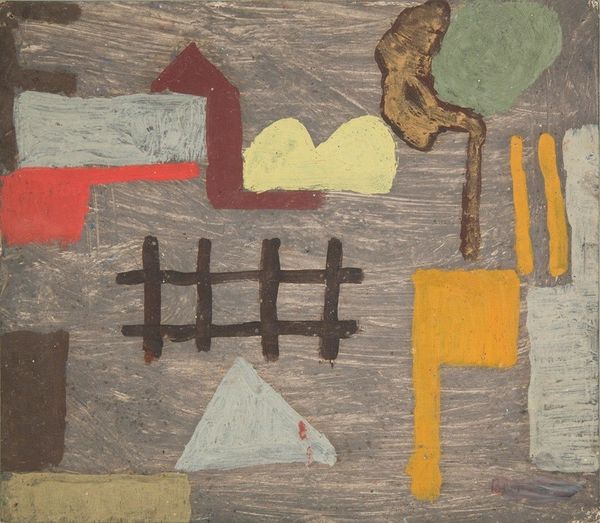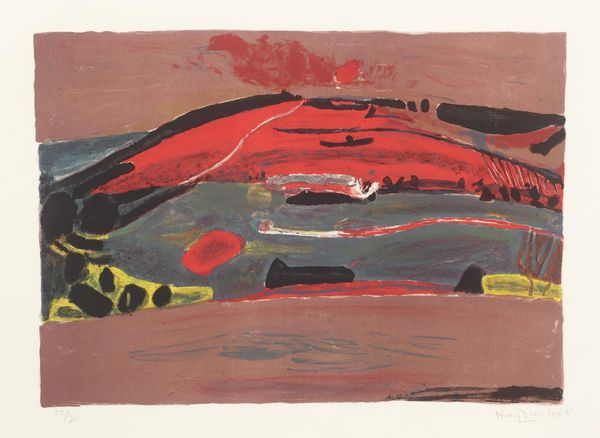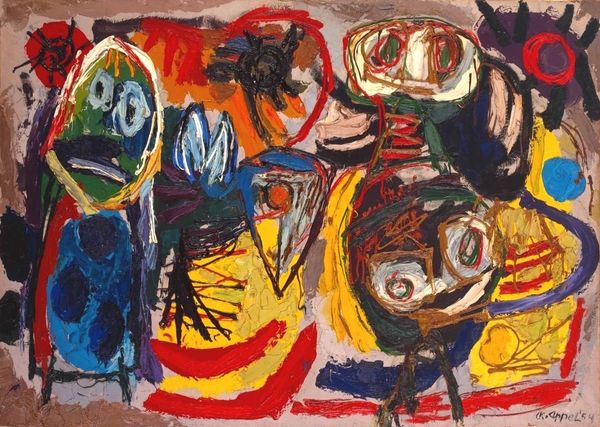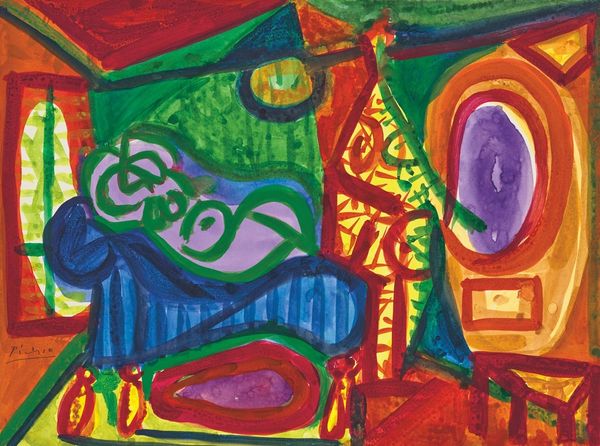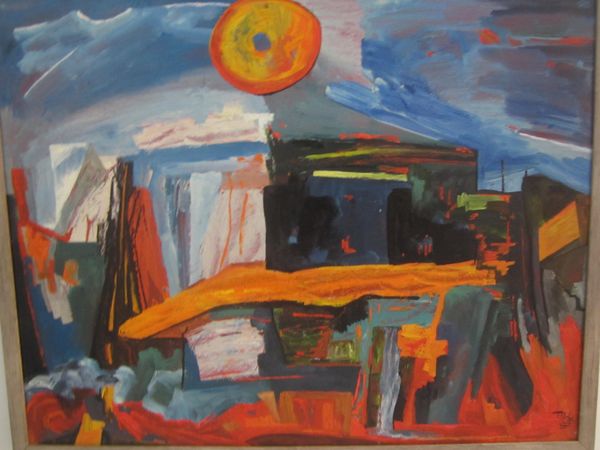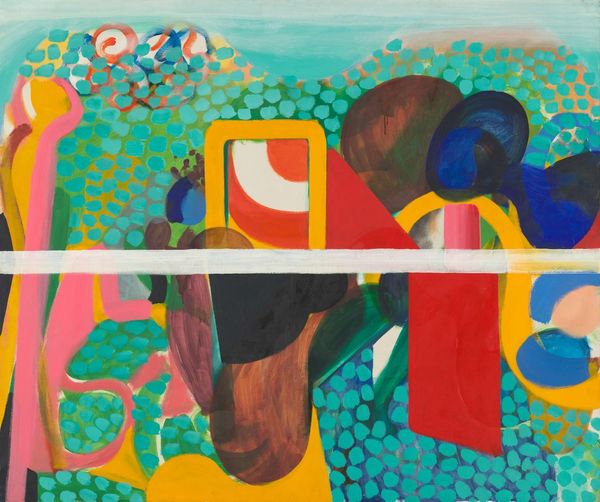
Dimensions: overall: 171 x 246.1 cm (67 5/16 x 96 7/8 in.) framed: 175.3 x 249.9 x 3.3 cm (69 x 98 3/8 x 1 5/16 in.)
Copyright: National Gallery of Art: CC0 1.0
Curator: Looking at Philip Guston’s "Midnight Pass Road" from 1975, one is immediately struck by its crude, almost clumsy, arrangement of objects. There's an overwhelming density here, achieved through layering and texture. What’s your initial take? Editor: It hits me as claustrophobic. This assemblage of ordinary items—a coffee cup, a lamp, even a ruler—crowds the canvas, producing a sense of discomfort, maybe even anxiety. Guston’s intentional use of abstraction almost renders them unknowable, raising broader questions about how everyday items influence feelings of alienation. Curator: Exactly, and it's how Guston uses the visual language of abstraction here that I think is essential. Look at the crude, almost cartoonish depiction. The flatness, combined with that specific grey he uses for the background and lower ground plane. It's an intense experience in materiality, creating the weight and feel of late-period Guston. Editor: It feels charged. We know he embraced representational forms later in his career precisely to challenge the formal constraints of Abstract Expressionism. Within the art-historical context, this “return to the figure” was a way to address pressing social issues during a turbulent period of American history. Curator: I would add that those issues appear in other late Gustons more clearly than here, and there’s a more fundamentally aesthetic strategy at play as well. Note how Guston’s seemingly unsophisticated style has compositional sophistication through recurring color choices that create coherence out of chaos. Editor: Sure, that is certainly there, and I won’t deny the undeniable rigor of the overall composition, especially the chromatic balance. It just cannot be detached from that deliberate rejection of art-world elitism for something messier and, for him, truer. By embracing simplicity and making legible art more generally accessible to political concerns. Curator: True. However, by flattening depth, and rendering forms in ways that foreground their material reality, Guston created paintings that oscillate between representation and non-representation, forcing the viewer to work harder and think more critically. Editor: So ultimately we see how deeply entangled political and art-historical elements became for Guston during this pivotal point in his career, pushing both boundaries to create space for his own complicated narratives. Curator: Agreed, what appears simple, in fact, presents profound possibilities and a visually stunning effect through line, shape, and colour.
Comments
No comments
Be the first to comment and join the conversation on the ultimate creative platform.
